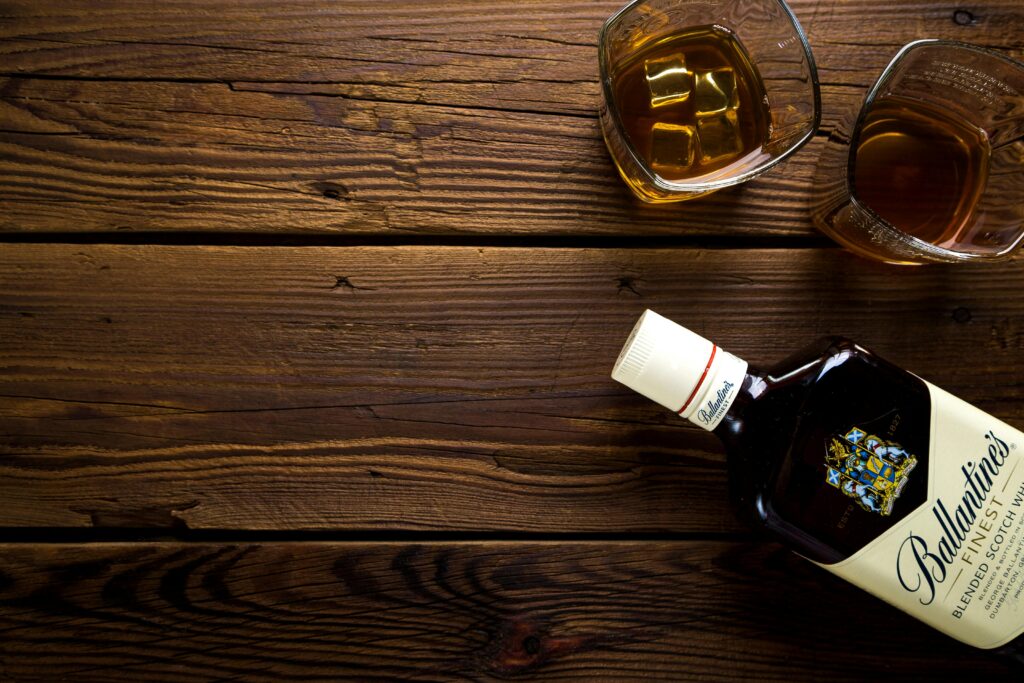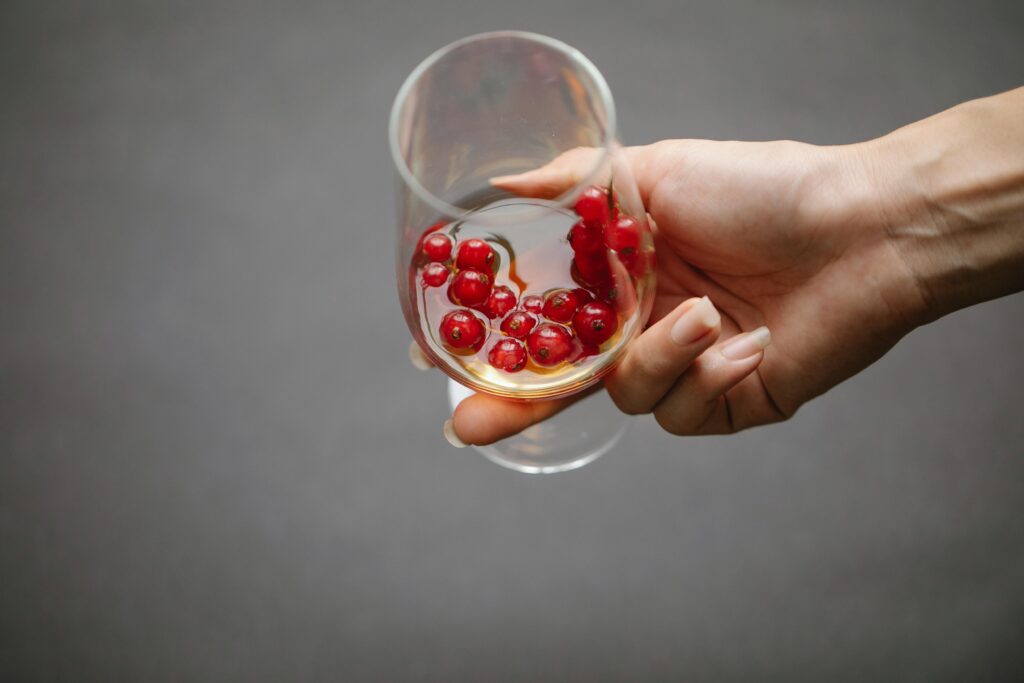Tracking your diet and nutrition has become easier with apps like Cronometer, which help individuals track calories, macros, and micronutrients in their meals. However, when it comes to logging alcoholic beverages, things can get a little tricky. Since alcohol doesn’t neatly fit into traditional categories like carbs, fats, or proteins, logging it correctly is crucial for an accurate tracking experience. In this article, we’ll explore how to add alcohol to Cronometer and ensure your tracking is as accurate as possible, helping you stay on top of your health goals.

Understanding How Alcohol is Logged in Cronometer
Cronometer treats alcohol as a separate category from the traditional macronutrients like carbs, proteins, and fats. It recognizes alcohol as a fourth macronutrient, which makes it easier to track and see how much of your calorie intake is coming from alcohol. When you add alcohol to Cronometer, you will typically see the calories logged without specifying the breakdown into carbs, fats, or proteins. It provides what is often referred to as “empty calories” – meaning it contributes to your energy intake but doesn’t provide essential nutrients that your body needs.
Instead of being classified as a carb, fat, or protein, alcohol is treated separately in Cronometer. This allows users to track how much alcohol they consume and how it affects their overall calorie intake. However, it’s important to understand that while alcohol provides calories, it doesn’t contribute to your daily macronutrient targets, which is why it’s tracked outside of the usual protein, carb, and fat categories.
This approach can be especially helpful for anyone who is trying to manage their calorie intake or maintain a balanced diet while still enjoying an alcoholic beverage. It allows users to see the impact alcohol has on their nutrition without interfering with their daily macronutrient goals.

How to Add Alcohol to Cronometer
There are several ways to add alcohol to your Cronometer database, depending on the beverage you’re consuming. Whether you’re drinking wine, beer, or spirits, the steps below will guide you through the process.
Using the Search Feature
Cronometer has a database of common alcoholic beverages, so the first step is to see if your drink is already included. Here’s how you do it:
- Open Cronometer and go to the “Foods” tab.
- Search for your drink: Type the name of the beverage (e.g., “red wine,” “beer,” or “vodka”) into the search bar.
- Review the options: If your beverage is listed, click on it, and the details will automatically populate in your food log.
- Adjust the serving size: If the listed amount doesn’t match the amount you’re consuming (e.g., a different serving size or ABV), you can adjust it to fit your needs.
Creating a Custom Entry for Alcohol
If Cronometer’s database doesn’t include the specific alcoholic drink you’re consuming (like a craft beer or a specific cocktail), you can create a custom entry. Here’s how:
- Add a custom food entry: After searching for your beverage and not finding it, click on the “Add Custom Food” button.
- Enter details: Fill in the alcohol’s details, including calories, ABV (Alcohol by Volume), and any other information such as serving size.
- Assign calories: Since alcohol provides 7 calories per gram, you’ll need to calculate the number of grams of alcohol in your drink based on the volume and ABV.
- Save it for future use: Once your custom entry is saved, it will appear in your food log whenever you need it.
Customizing Alcohol Entries for Accuracy
If you want to get really specific with your tracking, you can further customize entries by adjusting them based on the alcohol’s ABV. Here’s how you can do that:
- Calculate alcohol content: Multiply the volume of the drink (in milliliters) by the ABV percentage. For example, if you have 300ml of a 12% ABV beverage, multiply 300 by 0.12, which equals 36ml of pure alcohol.
- Convert to grams: Since alcohol has a density of 0.789 g/ml, multiply the alcohol volume by 0.789. So, 36ml of alcohol equals about 28.4 grams of alcohol.
- Log calories: Since each gram of alcohol has 7 calories, you can multiply the grams of alcohol by 7 to get the total calories from alcohol. For 28.4g of alcohol, you’d get 198.8 calories.

How to Handle Alcohol with Other Ingredients (Cocktails)
If you’re consuming cocktails or drinks that include mixers, the process becomes a bit more involved. For these types of drinks, you’ll need to account for both the alcohol and any additional ingredients, such as juices, soda, or syrups.
Here’s how to log a cocktail:
- Identify the ingredients: List out all the components of the cocktail. For example, a margarita typically includes tequila, lime juice, and triple sec.
- Log each ingredient: Start by logging the alcohol (using the steps mentioned above). Then, search for and add the mixers individually.
- Adjust serving sizes: Make sure the serving sizes for each ingredient match what you consumed.
- Calculate the total calories: Add up the calories for each ingredient (alcohol and mixers) to get the total calorie count for the cocktail.
How to Track Alcohol Macros
Alcohol doesn’t fit neatly into the traditional macronutrient categories like carbs, proteins, or fats. However, it’s still important to track its calories, as they can affect your overall nutrition goals. Here’s how you can log alcohol macros in a way that aligns with your diet.
Track Alcohol as Carbs
One way to track alcohol calories is by assigning them to your carb target. Since carbs provide 4 calories per gram, divide the alcohol calories by 4. For instance, if you consume 150 calories from alcohol, that would be the equivalent of 37.5g of carbs. This method can be especially useful if you’re on a low-carb diet and want to keep an eye on your carb intake.
Track Alcohol as Fats
Alternatively, you can track alcohol as fat. Since fat provides 9 calories per gram, you would divide the alcohol calories by 9. For example, 150 alcohol calories would be around 16.7g of fat. This option works if you’re monitoring your fat intake or following a higher-fat diet.
Split Between Carbs and Fats
If you prefer a more balanced approach, you can split the alcohol calories between carbs and fats. For example, you might allocate 75 calories to carbs and 75 calories to fats. This method gives you flexibility while still keeping your macronutrients in balance.
These options allow you to accurately account for alcohol’s calories while staying on track with your nutrition goals.
Tips for Tracking Alcohol More Effectively
To ensure you’re accurately tracking alcohol while supporting your nutrition goals, here are some helpful tips to make the process smoother.
- Plan Ahead: If you know you’ll be having a drink, it’s a good idea to plan your day’s nutrition in advance. By doing so, you can allocate the necessary calories for the alcohol and adjust your meals accordingly. This will ensure you don’t go over your calorie or macronutrient targets while still enjoying your drink. Planning ahead also gives you a clearer picture of how alcohol will impact your overall diet.
- Pre-log Your Drinks: Another useful tip is to log your drink into Cronometer ahead of time. By entering your beverage into your food log before you actually consume it, you eliminate the chance of forgetting to account for the alcohol later. This will help you stay on track and prevent any unexpected calorie intake from disrupting your nutrition goals.
- Focus on Low-Calorie Mixers: If you enjoy cocktails or mixed drinks, try to choose low-calorie mixers like sparkling water, seltzer, or diet soda. These options can keep your drink’s overall calorie count low while still providing the refreshing taste you’re looking for. Avoid high-calorie mixers like regular soda or fruit juices, which can quickly add up and offset your calorie control efforts.
- Hydrate While Drinking: It’s important to drink plenty of water alongside alcoholic beverages. Not only does this help with hydration, but it can also help you pace your drinks and reduce the overall calorie intake. Spacing out your alcohol consumption with water can make it easier to maintain control over your calorie count, and it can also help you feel better the next day. Hydrating between drinks may also reduce the temptation to drink more than intended.
By following these tips, you’ll be able to track alcohol consumption more effectively while keeping your diet on track and your health goals in sight.

Simplified Nutrition Tracking with ReciMe
If you’re looking for a simpler way to track your nutrition without the complexity of logging each detail, like when adding alcohol to your food log, ReciMe could be a great alternative to Cronometer.
At ReciMe, we created an app that focuses on the basics, helping you track the macronutrients in the meals you prepare without diving into the minutiae of every single nutrient. When you save a recipe in ReciMe, the app automatically calculates the calories and macronutrients, including protein, carbs, and fats, making it simple to stay on top of your nutrition. While we don’t yet offer specific alcohol tracking features like Cronometer does, ReciMe’s approach is designed to simplify meal planning, grocery shopping, and recipe organization for those who prefer a straightforward experience.
But ReciMe doesn’t stop there. Beyond tracking macronutrients, our app also helps you stay organized by saving recipes, planning your meals for the week, and creating grocery lists based on the ingredients you need. This all-in-one functionality makes meal prep easier and ensures you stay on top of your nutrition goals, all while saving you time. We’ve also designed ReciMe to sync seamlessly across devices, available on iOS, Android, and as a Chrome extension, so you can access it from anywhere and stay organized no matter where you are.
Just try it – you’ll love it:


Conclusion
Adding alcohol to Cronometer may seem challenging at first due to its unique classification outside of traditional macronutrients. However, with a bit of preparation, you can easily log alcoholic beverages and track their calories to maintain a balanced diet. Whether you choose to track alcohol as carbs, fats, or a combination of both, understanding how to use Cronometer’s features will help you stay on top of your nutrition goals while enjoying the occasional drink. Remember to plan ahead, pre-log your drinks, and choose low-calorie mixers to make the process even easier.
Frequently Asked Questions
How do I log alcohol in Cronometer?
To log alcohol in Cronometer, search for your specific beverage in the database, or create a custom entry by entering the drink’s alcohol by volume (ABV) and serving size. Cronometer will calculate the calories based on the alcohol content and volume.
Can I track alcohol calories in Cronometer?
Yes, Cronometer allows you to track alcohol as a separate macronutrient. It provides the calories from alcohol but does not categorize it as a carb, fat, or protein. You can manually assign alcohol calories to any macronutrient category (carbs, fats, or both) if desired.
What if my drink isn’t in Cronometer’s database?
If you can’t find your drink in Cronometer’s database, you can create a custom entry. You’ll need to calculate the calories based on the drink’s alcohol content and serving size. This can be done by determining the amount of pure alcohol in the drink and then calculating the total calories based on the grams of alcohol.
How should I account for mixed drinks in Cronometer?
For mixed drinks, log the alcohol separately first, then add the calories from mixers. This will give you an accurate calorie total for your drink. Ensure that you adjust the serving sizes of each ingredient to match what you consumed.
Is it necessary to track alcohol in Cronometer?
While it’s not strictly necessary, tracking alcohol helps you get a more accurate view of your total calorie intake. Alcohol can add up quickly in terms of calories, and knowing how it affects your nutrition goals is important if you’re aiming to lose weight or maintain a balanced diet.
How can I keep my alcohol intake within my macros?
To keep alcohol within your macros, plan ahead by allocating calories for alcohol early in the day. You can also track the calories as carbs, fats, or a combination of both, depending on your macronutrient targets for the day.
